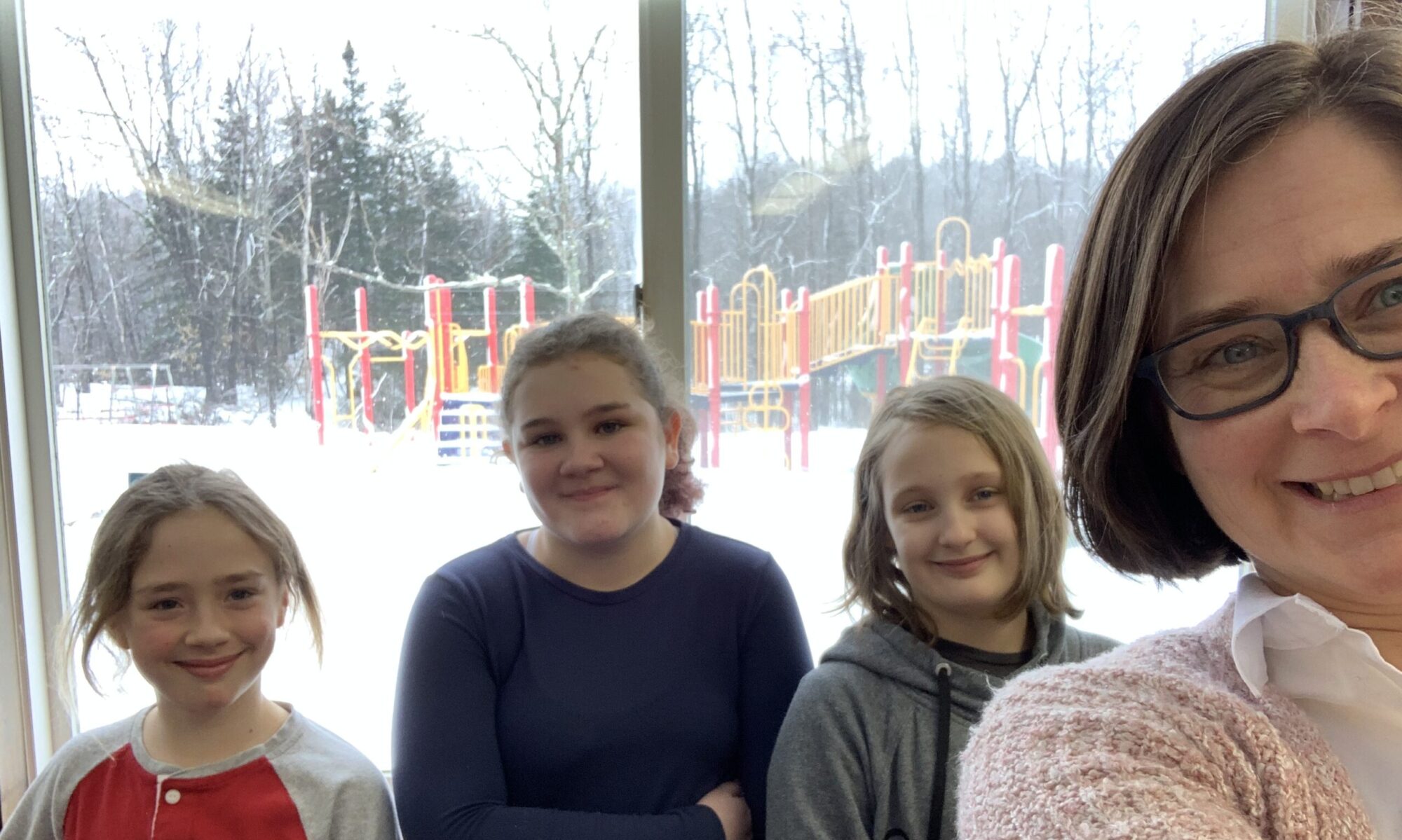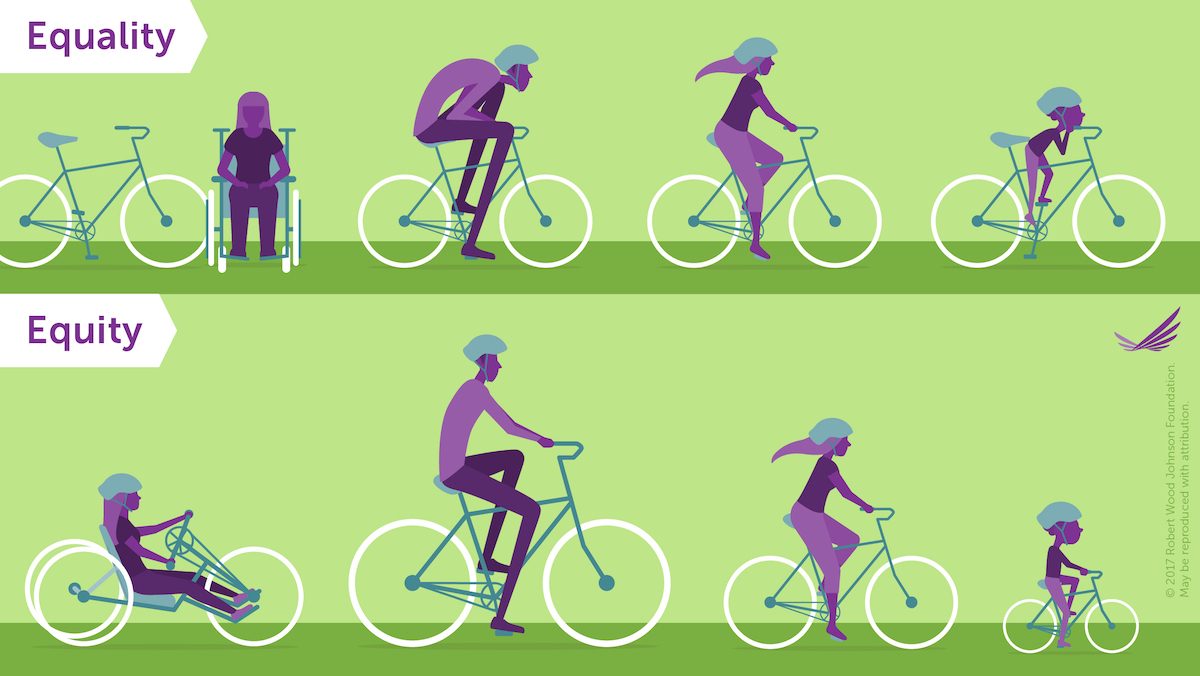VTDigger reports that Vermont Secretary of Education Dan French said “From our standpoint, we portray districts being on a journey. Just like everyone in the world is on a journey. And we don’t see 2020 as some sort of hard and fast date.” However, regardless of a deadline, we should remain focused on centering equity as we implement personalized learning. Equity is at the heart of this state policy.
Whether you are well on you way or just starting work on the three pillars keeping equity at the forefront of education work is a moral imperative. And here are three resources to help in your journey.
What do *you* mean by equity?
The National Equity Project defines it as “each child receives what they need to develop to their full academic and social potential.” Furthermore, they offer that moving toward it involves:
- Ensuring equally high outcomes for all participants in our educational system. Removing the predictability of success. Or failures that currently correlates with any social or cultural factor.
- Interrupting inequitable practices, examining biases. And creating inclusive multicultural school environments for adults and children.
- Discovering and cultivating the unique gifts, talents and interests that every human possesses.
Sounds simple in theory; challenging in practice.
3 structures for centering equity
1. Equity audits
Equity audits help examine us examine gaps in opportunity. Even more, they identify solutions to addressing those gaps.
First and foremost, Teaching Tolerance recommends using the equity audits from the Mid-Atlantic Equity Consortium. You can choose the right grain-size for your work. Everything from systems level to classroom/teacher level audits. And they’re robust!
Another resource: the The School-Wide Cultural Competence Observation Checklist (.pdf) They arrange questions into the following categories:
- Community & Parents
- School Policy & Practice
- Classroom & Teacher
- Student
- Curriculum & Instruction
Along those same lines? The VT Agency of Education’s tools and checklists to support implementation of the Vermont Guiding Principles. The AOE lists resources in the following categories:
- Frameworks
- Classroom/Program Tools
- Individual Tools
- Family Engagement Tools
- Professional Development Tools
2. The Equity Literacy Framework
Paul Gorski and EdChange developed the Equity Literacy Framework.
Equity Literacy Framework developed by @pgorski shared by @EunMi_Haslam at So. Burlington in-service. #VTed pic.twitter.com/4svyQnVNiP
— Donna Macdonald (@dsmacdonald) March 31, 2017
The framework encourages you to consider applying the following frames:
- “The ability to Recognize even the subtlest biases and inequities.”
- How are you engaging a variety of perspectives to help you recognize bias and inequity in your system?
- What perspectives are missing?
- “The ability to Respond skillfully and equitably to biases and inequities in the immediate term.”
- What steps are you taking to respond to bias and inequity?
- Who holds you accountable?
- “The ability to Redress biases and inequities by understanding and addressing them at their institutional roots.”
- Have you examined your policies and procedures for bias?
- Who needs to be at the table to construct or revise policies so they are more likely to be bias free?
- “The ability to Sustain equity efforts even in the face of discomfort or resistance.”
- How do you communicate your equity efforts?
- What values help you stand firm when the going gets rough?
3. Examine your own practice
The most important resource by far, on this list, is you. Don’t underestimate your own power as a change agent. Push your thinking. Stay informed. Find ways to reflect. Collect feedback, think deeply, and reach out to other educators doing the same work.
Reach out to your students. They can provide invaluable feedback on your journey.

Here are a few more resources to consider:
- Equity Begins with Engagement. We all want to bring out excellence in our students. But the thing that keeps us up at night is our constant striving to do that for ALL of our students.
- Using Protocols for Equity. So, maybe you’ve been using protocols at faculty meetings or professional learning community sessions. Perhaps you’ve found that they make space for all voices in conversations. Or you like how they foster collaboration as you work together to structure personalized learning plans. Know what else they can do? Support us as we have the toughest conversations of all: those focused on equity.
- #vted Reads: We Got this with Kathleen Brinegar. A powerful episode of our #vted Reads podcast, where Jeanie Phillips and noted equity scholar Kathleen Brinegar work through Cornelius Minor’s book on equity in education.
- Unpacking equity in Passion Projects and Genius Hours
- Diversity audits in the library. Follow Ottauquechee’s lead and let this conversation around diversity in books springboard you into deeper conversations about diversity in all areas of your school community.
- Diverse Books for Conversations for conversations around identity. “Sometimes you can do everything right and things will still go wrong. You’ve just got to keep doing right.”
- Equity and the in-school business. Mettawee creates a school “bank” to crowdfund field trips. All in!
- Is extra credit over? What factors affect who has the time, space and resources to keep working beyond the school day?
- Beyond Bling: How do we move all learners to the deep end of the pool?
How will your practice change?
Equity connects many of Vermont’s educational initiatives. Still, we always have more work to do. So as you, your team, your school, and your district continue to make transformational change, find your leverage for greater equity. You’re the single most valuable change agent in bringing — and keeping — equity at the heart of teaching.


